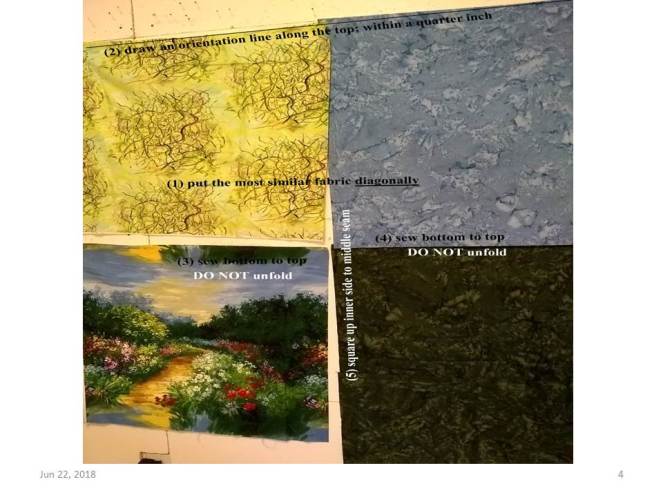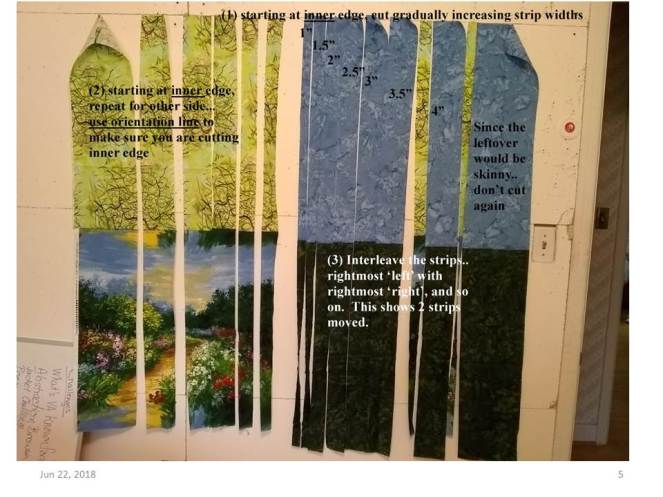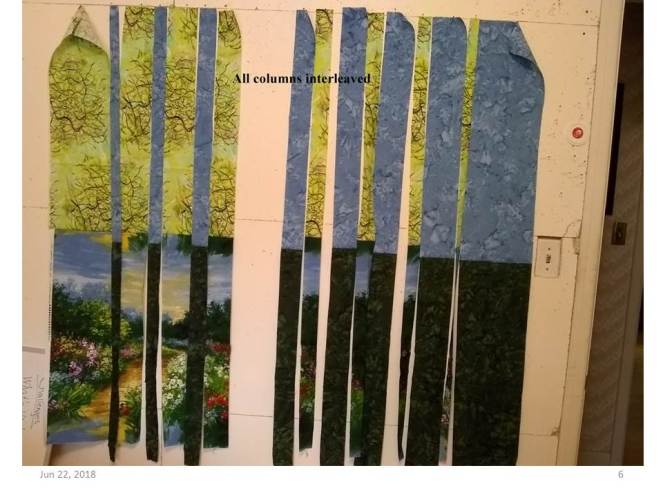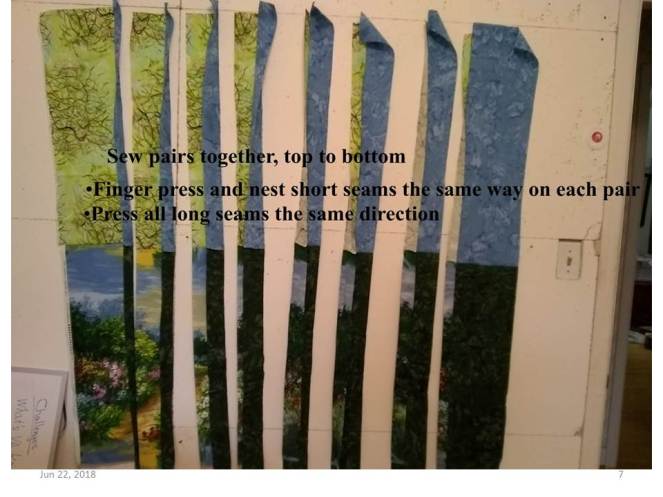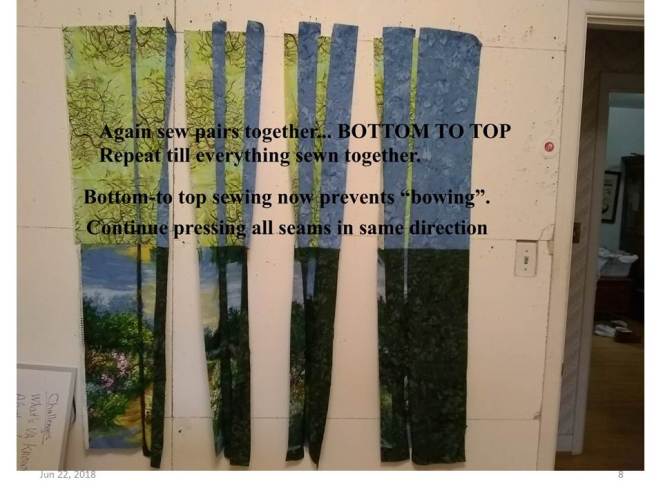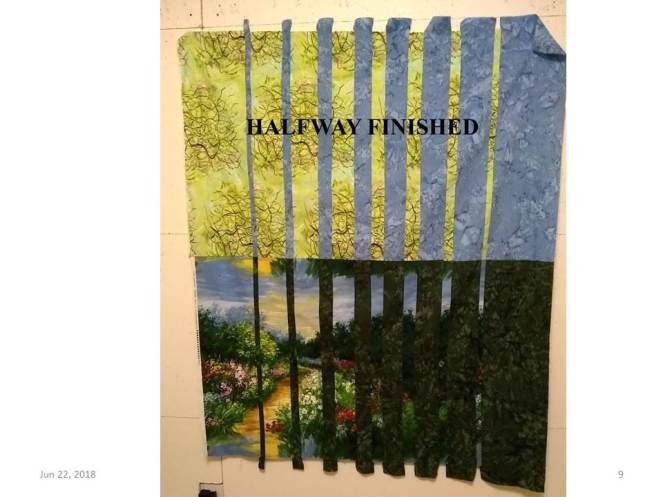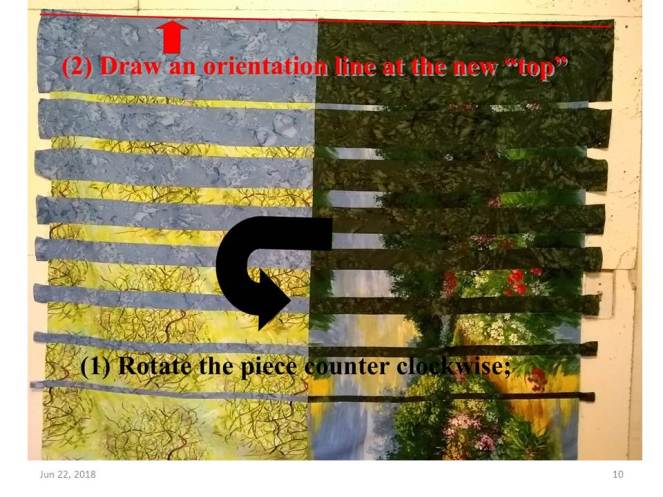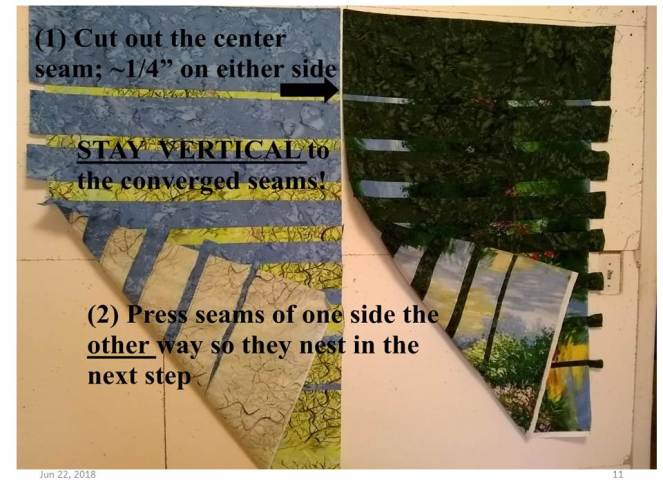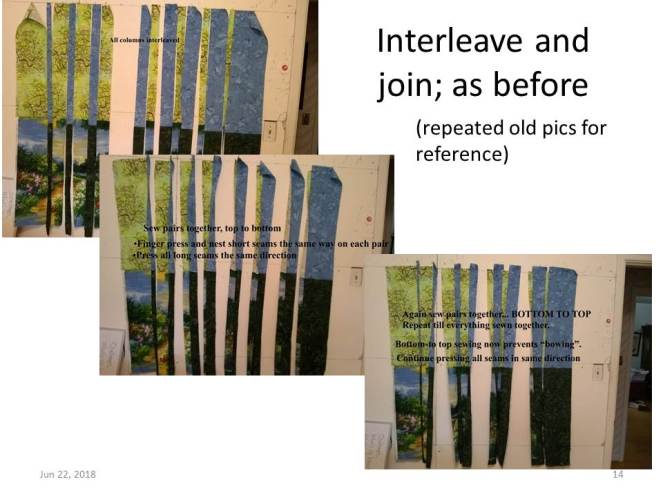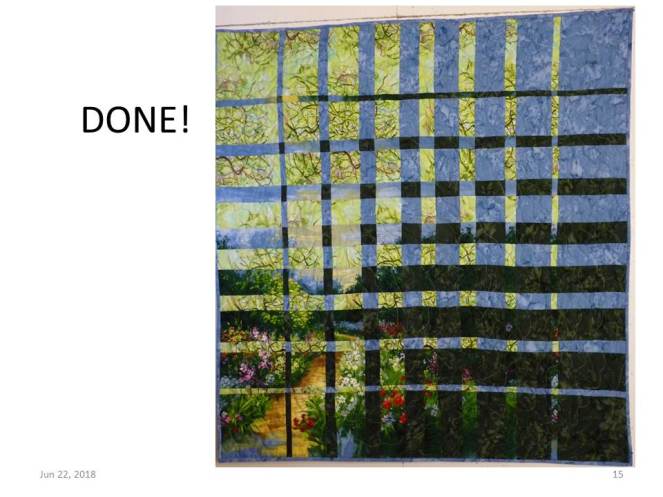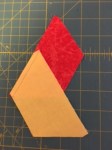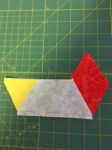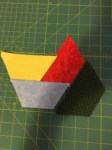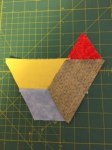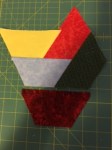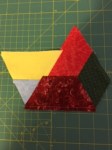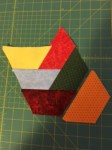This is the presentation from Dawn Schaben’s February 2019 program on T-shirt quilts.
How many t-shirts do I need to make a t-shirt quilt?
- 12 t-shirts: throw approximately 48 x 64
- 20 t-shirts: twin size quilt approximately 64 x 82
- 30 t-shirts: full size quilt approximately 82 x 96
- 36 t-shirts: queen size quilt approximately 96 x 96
- 42 t-shirts: king size quilt approximately 110 x 96
These measurements include 1.5 inch sashing and 2 inch border with each t-shirt block being about 14.5 inches.
5 Typical styles of T-shirt Quilts
- Traditional Block Style with Sashing
- Traditional Block Style without Sashing
- Unequal Rows or Columns
- The Too Cool Style also known as: Variable or Puzzle Styles
- Crazy Quilt Style
Details to look for in a T-Shirt Quilt
- Using interfacing or not
- Blocks Fit the Designs on the T-shirts
- Designs Are Centered on the Block
- No Part of the Design on the T-Shirt is Cut Off
- The Blocks are all different sizes
- No Rows and Columns
Ways to Mess Up Your Quilt
- Using cheap fabric and materials to make your quilt.
- Using 100% polyester batting
- All the blocks are the same color
- No thought put into layout
Layout Design Ideas
- Shadow Box
- Patchwork
- Leave On collars, pockets, patches
- Incorporate Photos – graduation quilts
- Turn the Blocks on Point – more challenging
- Use Quilt Patterns Designed for Large Blocks
What do I need to make a t-shirt quilt?
- T-shirts
- Interfacing
- Material for sashing or blocks (pre-washed)
- Material for backing (pre-washed)
- Batting
- Polyester – pros and cons
- Cotton – pros and cons
Sorting the T-Shirts
- Sort by color
- Do you have enough for more than 1 quilt
- Remove stained shirts
- Remove shirts with holes
- Do you have a theme?
- Sport
- Activity
- Organization
Preparing your t-shirts
- Wash and dry – do not use softener – interfacing will not stick to the t-shirt
- Cut up the t-shirt
- Front, back, sleeves
- Cut the pieces larger than you want for the actual blocks
- Make sure you cut off neck edges and seams (don’t want that extra bulk in seams)
- Fusible interfacing
- After you have applied the fusible interfacing, trim the shirt down to the desired size – do not cut off any of the design and remember to leave seam allowance
Interfacing /Stabilizer
- Knit or woven
- Pellon SF101 Shape-Flex – Iron-on Woven (great if you are using t-shirts with lots of wear)
- Bosal 312 – light-weight not woven
- Pellon Quilters Grid 820 – non-woven
- Attached Mistyfuse
- Pellon 906F Fusible
- June Tailor T-Shirt Interfacing
- White or Black based on color of t-shirt
- Follow the manufacturers instructions for the fusing!! IMPORTANT!!
- Weight of stabilizer – don’t use a heavy stabilizer as it will add weight and take away the drape and the comfort feel of the quilt.
- Don’t piece interfacing – it will show through in the finished quilt
- Benefits of stablizer – blocks that are easier to work with and give you a better finished product, especially during the quilting process.
Design Ideas
- Sashing or No Sashing
- I personally recommend sashing as it gives the quilt stability and helps with the stretch issues that can occur when you sew t-shirt to t-shirt.
- Sashing can also provide an overall look that pulls together all the different colors in the t-shirts.
- Don’t have to use traditional blocks with sashing. Try something different.
- Who says that all the blocks have to be squares and rectangles? Take this T-shirt quilt idea for a spin, by piecing striped, checkered and zig-zag sashing to make your shirt blocks really pop!




